ACLP Books
ACLP strives to maintain the highest-quality standard of publishing while being seen as the pre-eminent source of evidence-based research in child life.
ACLP has many published books on the topic of child life practice for you to explore.
Navigating the Cancer Journey: Reflections from a Child Life Specialist and Mother

Child Life Blog
Stay up-to-date on the latest child life news, resources, and current events.
Read the Latest Blog Post
ACLP Reports & Statements
Read the latest ACLP reports and statements. Topics range from showcasing the value of child life to statements on the salary crisis and gun violence.
.png?sfvrsn=67cb974d_0)
ACLP Annual Reports
The ACLP Annual Report highlights examples of ACLP members' impact from membership and volunteer hours, a financial update, and more.
Read More
